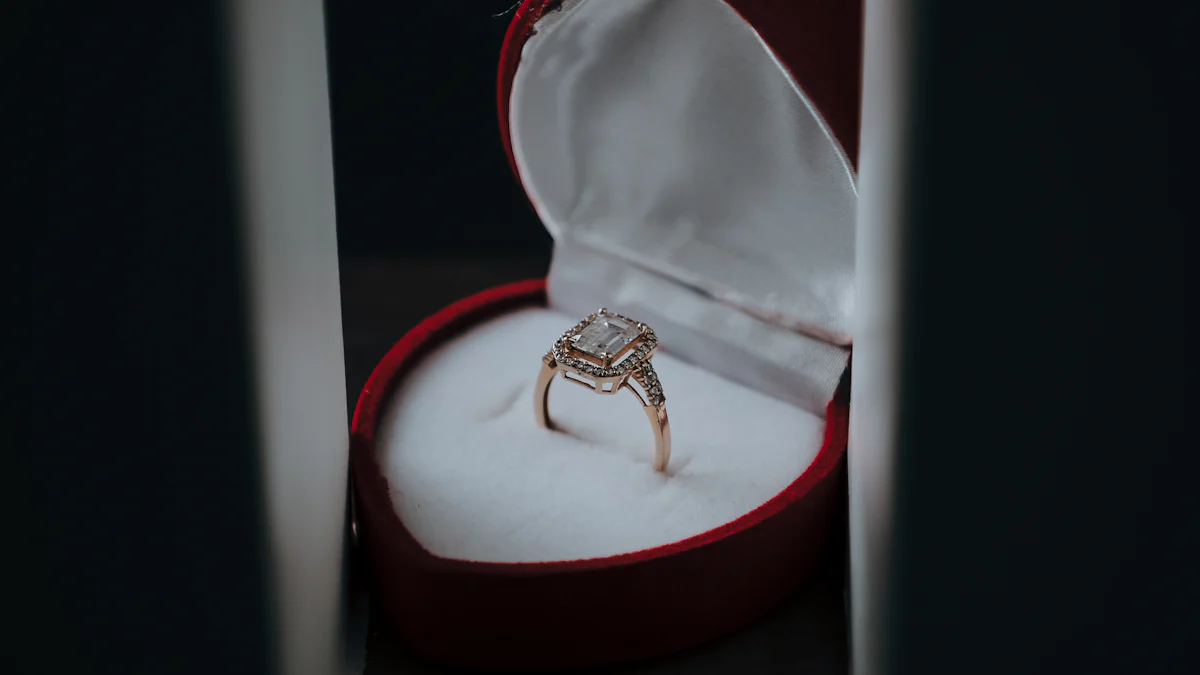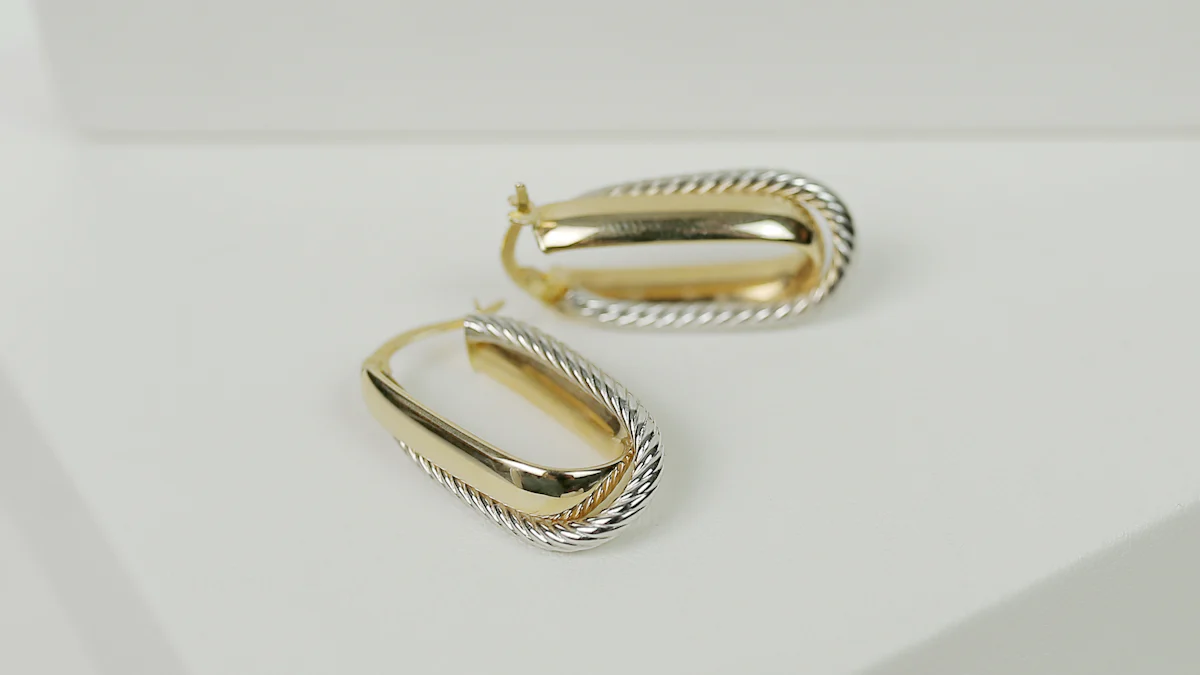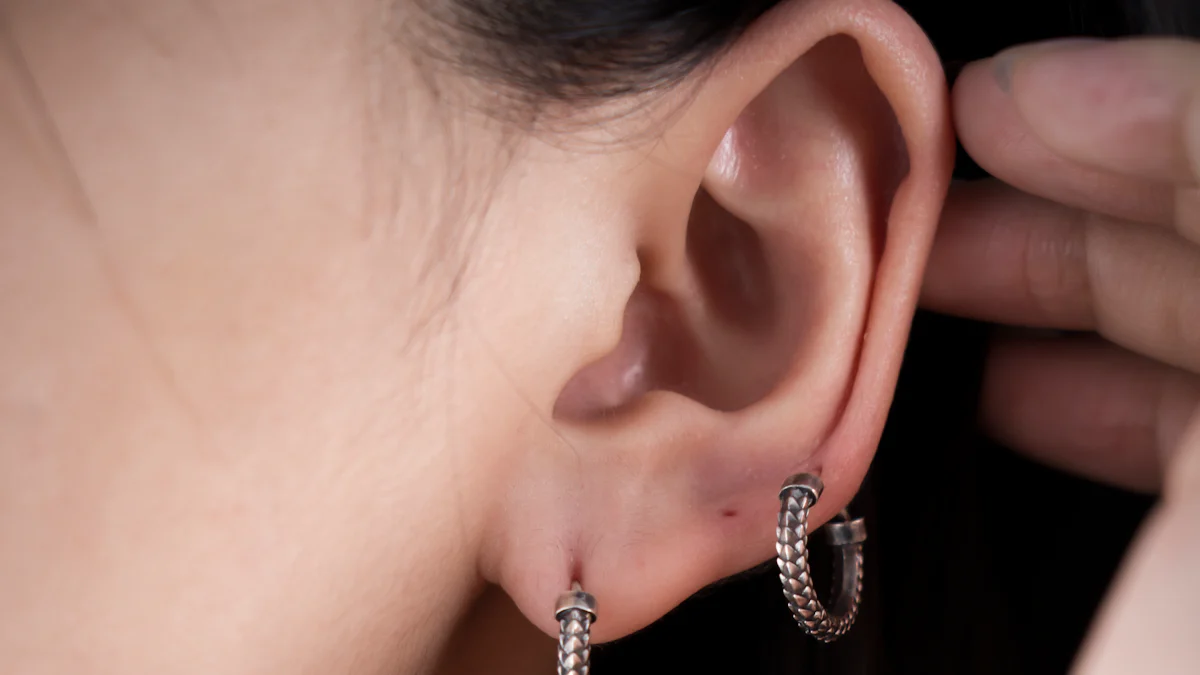What Does CTTW Mean in Jewelry and Why It Matters

If you’ve ever shopped for diamond jewelry, you’ve probably come across the term CTTW. But what does CTTW mean in jewelry? It stands for "carat total weight," which is the combined weight of all the diamonds in a piece. This measurement helps you understand the overall size of the stones, but it doesn’t tell the whole story.
Many buyers mistakenly believe that a higher CTTW guarantees better quality or higher value. However, factors like cut, clarity, and color play an equally important role. A piece with smaller, high-quality diamonds can often outshine one with larger but lower-quality stones. Knowing how CTTW works ensures you make smarter choices when buying jewelry.
What Does CTTW Mean in Jewelry?

Definition of CTTW
When you see the term CTTW in jewelry descriptions, it stands for "Carat Total Weight." This refers to the combined weight of all the diamonds or gemstones in a piece. It’s a standard measurement used in the jewelry industry to give you an idea of the overall size and presence of the stones.
Here’s a quick breakdown:
- One carat equals 200 milligrams or 0.2 grams.
- CTTW includes the weight of every diamond or gemstone in the piece, not just the largest one.
- A higher CTTW often means a more substantial piece of jewelry, but it doesn’t always guarantee better quality or value.
Understanding what CTTW means in jewelry helps you make informed decisions, especially when comparing pieces with multiple stones.
How Total Carat Weight Is Calculated
Jewelers calculate total carat weight by adding up the individual weights of all the stones in a piece. Each diamond or gemstone is weighed separately to ensure accuracy.
For example:
- If a ring has four diamonds, each weighing 0.25 carats, the total carat weight (CTTW) is 0.25 x 4 = 1.00 carats.
- For a bracelet with stones weighing 0.25, 0.50, and 0.75 carats, the CTTW is 0.25 + 0.50 + 0.75 = 1.50 carats.
This calculation ensures you know the total weight of the stones, which can influence the piece’s design, appearance, and price.
Examples of CTTW in Diamond Jewelry
Let’s look at how CTTW appears in real-life jewelry:
- A diamond necklace might feature a center diamond weighing 0.75 carats, with two smaller accent diamonds of 0.25 carats each. The total CTTW would be 1.25 carats.
- A halo diamond engagement ring could have a 1-carat center stone surrounded by smaller diamonds, bringing the total carat weight to 1.51 carats.
These examples show how CTTW reflects the combined weight of all the stones, giving you a better sense of the jewelry’s overall look and feel.
CTTW vs. Carat Weight: Understanding the Difference

What Is Carat Weight?
Carat weight measures the weight of a single diamond or gemstone. It’s one of the most important factors in determining the size and quality of a stone. One carat equals 200 milligrams, so even a small difference in carat weight can make a big impact on the appearance and price of a diamond.
Jewelers often use carat weight to describe the main stone in a piece of jewelry. For example, if you’re looking at a solitaire engagement ring, the carat weight tells you how much the single diamond weighs. This measurement is crucial because it directly affects the stone’s brilliance and overall value.
How CTTW Differs from Carat Weight
While carat weight focuses on a single diamond, CTTW (carat total weight) measures the combined weight of all the diamonds in a piece of jewelry. This distinction is key when you’re shopping for items with multiple stones, like a halo ring or a tennis bracelet.
When we talk about CTTW, we’re referring to the total carat weight of all the diamonds combined in your fabulous piece of jewelry. On the other hand, carat weight highlights the weight of each individual diamond—the stars of the show.
For instance:
- A ring with a 1-carat center stone and 0.5 CTTW means the center diamond weighs 1 carat, while the total weight of all the stones is 1.5 carats.
- A necklace with several smaller diamonds might have a CTTW of 2 carats, but no single stone weighs more than 0.25 carats.
Understanding this difference helps you evaluate both the size and the design of the jewelry you’re considering.
Common Misunderstandings About CTTW and Carat Weight
Many buyers assume that a higher CTTW automatically means better quality. This isn’t true. The quality of diamonds depends on factors like cut, clarity, and color, not just their weight. A piece with smaller, high-quality diamonds can often look more stunning than one with larger, lower-quality stones.
Another common myth is that total weight equals value. While CTTW can influence the price, the quality of individual stones plays a bigger role in determining the overall value of the jewelry.
Finally, some people think all stones in a piece count equally. In reality, the center stone often has the most visual impact, while smaller accent stones add sparkle but don’t carry the same weight in terms of value.
By understanding these distinctions, you’ll be better equipped to choose jewelry that matches your preferences and budget.
Why CTTW Is Important When Buying Jewelry
Impact of CTTW on Appearance and Design
CTTW plays a big role in how a piece of jewelry looks. A higher CTTW often creates a more eye-catching and bold appearance. For example, in rings, larger gemstones with a higher total carat weight can make the design more striking. On the other hand, smaller stones arranged thoughtfully can add elegance and sophistication.
The design of the jewelry also matters. A necklace with a high CTTW might use a single focal point, like a large center stone, or multiple smaller stones for a richer, more intricate look. Earrings, too, can vary. Some styles prioritize comfort with smaller stones, while others go for maximum sparkle with larger ones.
However, it’s not just about size. A piece with a high CTTW but lower-quality stones might not look as stunning as one with fewer, high-quality diamonds. The arrangement and quality of the stones are just as important as their total weight.
How CTTW Affects Value and Pricing
CTTW directly impacts the value of diamond jewelry. Generally, a higher CTTW means a more valuable piece because larger diamonds are rarer. However, the price of diamonds doesn’t increase proportionally with carat weight. Larger diamonds often have a higher price per carat, making them significantly more expensive.
But don’t forget about quality. Factors like cut, clarity, and color can outweigh carat weight when it comes to pricing. For instance, a diamond engagement ring with a smaller but flawless center stone might cost more than one with a larger, less brilliant diamond. Comparing CTTW alongside these quality factors helps you understand the true value of a piece.
The Role of CTTW in Multi-Diamond Jewelry
In multi-diamond jewelry, CTTW is essential. It gives you the total weight of diamonds in the piece, helping you gauge its overall value and visual impact. For example, a bracelet with a high diamond total weight might feature dozens of small stones, creating a dazzling effect.
This measurement is especially important for designs like halo rings or tennis bracelets, where the total weight of diamonds contributes to the piece’s sparkle and elegance. Knowing the CTTW helps you appreciate the craftsmanship and design of multi-diamond jewelry while ensuring you’re getting what you pay for.
CTTW and Other Factors That Influence Quality
The Importance of Cut, Clarity, and Color
When you’re evaluating jewelry, it’s easy to focus on CTTW. But don’t overlook the other critical factors that determine a diamond’s beauty and value: cut, clarity, and color. These three elements work together to create the sparkle and brilliance you love.
The cut of a diamond is all about how well it reflects light. A well-cut diamond catches the eye with its dazzling brilliance, while a poorly cut one can look dull, no matter its size. Color is another key factor. Diamonds are graded from D (completely colorless) to Z (noticeable yellow or brown hues). The closer a diamond is to colorless, the more valuable it is. Clarity measures the presence of internal or external flaws, known as inclusions and blemishes. Fewer flaws mean a higher clarity grade and a more stunning diamond.
These factors, along with carat weight, make up the Four Cs of diamond quality. Together, they help you assess the overall appeal and worth of a piece of jewelry.
Why CTTW Alone Doesn’t Define Quality
CTTW gives you the total weight of all the diamonds in a piece, but it doesn’t tell the whole story. A higher CTTW might sound impressive, but it doesn’t guarantee beauty or value. The individual quality of each diamond matters just as much.
For example, a smaller diamond with excellent cut, clarity, and color can outshine a larger one with lower grades in these areas. That’s why you shouldn’t rely on CTTW alone when choosing jewelry. It’s just one piece of the puzzle.
Balancing CTTW with Other Quality Metrics
To make the best choice, you need to balance CTTW with other factors like design, metal type, and the quality of the diamonds. A piece with a thoughtful design and high-quality stones will always stand out, even if the CTTW isn’t the highest.
Ultimately, the value and beauty of jewelry go beyond its carat total weight. By considering all aspects, you’ll find a piece that truly speaks to you.
Tips for Buyers: Making Smart Jewelry Purchases
Questions to Ask About Carat Total Weight
When shopping for jewelry, asking the right questions about carat total weight can save you from making costly mistakes. Start by asking how the carat total weight is distributed across the piece. Is there a single large diamond, or are there multiple smaller stones? This helps you understand the design and visual impact.
Next, inquire about the quality of the diamonds. Are they well-cut diamonds with excellent brilliance? What about the clarity of the diamonds and the color of the diamonds? These factors significantly affect how the jewelry looks and its overall value.
Finally, ask if the carat total weight includes all stones, including accent diamonds. Some jewelers might highlight the total weight without clarifying the size of the main stone. By asking these questions, you’ll get a clearer picture of what you’re buying.
Comparing Jewelry Pieces Based on CTTW
Comparing jewelry pieces based on carat total weight involves more than just looking at numbers. You need to consider the entire piece, including its design and how the stones are arranged. For example:
- A ring with a higher carat total weight might look more luxurious, but a lower CTTW ring could offer a more delicate and elegant style.
- Different settings, like halo or pave, can make smaller stones appear larger, enhancing the overall allure of the jewelry.
Also, compare the CTTW against market averages to gauge value. A well-designed piece with a balanced CTTW and high-quality stones often stands out, even if it doesn’t have the highest total weight.
Choosing Reputable Jewelers for Guidance
Finding a trustworthy jeweler is key to making smart purchases. Look for jewelers with certifications and positive reviews. A reputable jeweler will explain the details of carat total weight, carat weight, and the quality of the stones without pressuring you to buy.
Ask for recommendations from friends or family, or check online for jewelers with strong reputations. A good jeweler will guide you through the process, helping you balance your budget with your preferences. They’ll also ensure you’re getting a piece that matches your style and expectations.
Understanding CTTW is key to making smart jewelry purchases. It helps you avoid common mistakes, like overestimating a piece’s value, and ensures you get the sparkle and brilliance you’re looking for. Knowing how CTTW differs from carat weight allows you to compare options effectively and appreciate multi-stone designs.
Don’t stop at CTTW, though. Pay attention to the cut, color, and clarity of the stones, as well as the overall craftsmanship. Look for certifications from trusted gemological institutes. By asking the right questions and working with reputable jewelers, you’ll find jewelry that truly shines.
FAQ
What does CTTW mean in simple terms?
CTTW stands for "Carat Total Weight." It’s the combined weight of all diamonds or gemstones in a piece of jewelry. Think of it as the total size of all the stones together, not just one.
Does a higher CTTW mean better quality?
Not always! A higher CTTW means more weight, but quality depends on factors like cut, clarity, and color. Smaller, high-quality diamonds can look more brilliant than larger, lower-quality ones.
How can I tell if CTTW includes all stones?
Ask your jeweler! Some descriptions focus on the main stone and leave out accent stones. Always confirm if the CTTW includes every diamond or gemstone in the piece.
Is CTTW only for diamonds?
Nope! Jewelers use CTTW for any gemstones in a piece, not just diamonds. Whether it’s sapphires, rubies, or emeralds, CTTW measures the total weight of all stones.
Why is CTTW important for multi-stone jewelry?
CTTW helps you understand the overall size and sparkle of multi-stone designs. It’s especially useful for pieces like tennis bracelets or halo rings, where many smaller stones create a dazzling effect.
See Also
Exploring The Meaning Behind Eternity Diamond Rings
Comparing Tungsten Diamond Rings With Traditional Options
The Importance Of Three Stone Diamond Rings Explained
Why A Gold Three Diamond Ring Is Unique
Comprehensive Analysis Of A 5 Carat Lab Grown Tennis Bracelet

